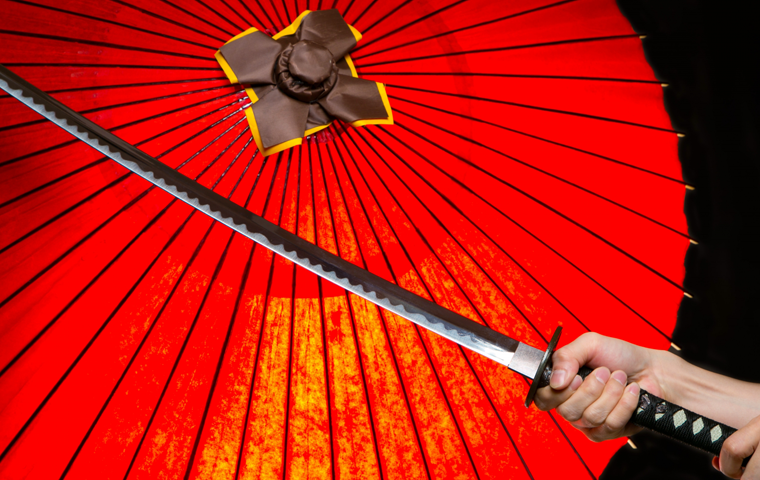How Ayumu Hirano Replaced Shaun White to Reach the Gold Medal in Halfpipe
Related Articles

I recall what Ayumu Hirano said eight years ago, when he won the silver at his first Olympic Games in Sochi.
“Being [Japan’s] youngest medalist [in the Winter Olympics] will remain a history, and first of all, I’m happy about that.”
A snowboarder, moreover, a 15-year-old, would not usually care much about the record as an Olympian or the performance as a national team member. Yet, with an innocent expression, Hirano spoke most proudly about having made history.
Since then, he had mentioned the word “challenge” repeatedly. His mindset of “aiming to do what no one else has done” has remained consistent. Just like riding the snow, it must be his gift.
Skateboarding in Tokyo 2020: “Totally Different Feel; Was Anxious All the Time”
At the previous PyeongChang 2018, Hirano became the first snowboarder to land a series of 1440 tricks in an Olympic competition. And in Tokyo 2020 last summer, he competed in skateboarding, making consecutive appearances in both winter and summer Olympics. As for the reason he challenged two-way, he said, “It would be good if I could convey something by trying things most people won’t do.” He could have stayed in his comfort zone as much as he liked. But instead, he stepped into a new territory, as a snowboarder and an athlete.
“With skateboarding, I felt out of place as I performed, quite different from snowboarding. I didn’t know about a lot of things, and there were scenes where I had to face myself much more than I imagined. It was a totally different feeling; I was anxious all the time, watching how other players skated and trying to figure out what I should do. But it allowed me to absorb various things I wouldn’t have experienced though snowboarding.”
The two sports are fairly similar, both involving sideways ride, and Shaun White also tried to qualify for the U.S. national team in skateboarding. However, as Olympic events, there is a stark difference between snowboard halfpipe that began in 1998 Nagano Olympics and skateboarding that made its debut at Tokyo 2020.
Gold Medalists Agree the Enjoyment Comes After the Pain
“The history of skateboarding and snowboarding [in Olympics] are entirely different. Currently, I believe the gap between snowboarding as a competitive sport and snowboarding as a culture is widening significantly. Where I am right now, the athletic aspect is strong, and we’re really pushing to the limits. It’s a different picture from where it’s been in the past, and we’re competing in that situation.”
The halfpipes have become huge, and the tricks exceedingly more difficult. As snowboarding has become aggravated as a competition, it is not a breeze even for Hirano who is among the front-runners.
“Even after experiencing the Tokyo Olympics, I’m not in a state to really enjoy myself during performance. It’s pretty tough for everybody. I think you can only reach the fun state after you have gone through the pain.”
Skateboarder Yuto Horigome, who also became a gold medalist, had made similar comments.
“Some tricks take several years to learn. When you can’t do the trick you want to do for so long, practice becomes grueling, and injuries can also be a bitter blow. But the joy of mastering the trick overcomes everything. In the end, it’s like how much you love skateboarding. There are tough times, but we’re not doing it reluctantly. Because we love the sport, we could withstand the hardships.”
“Congratulations Ayumu.” Horigome sent a message through social media to his buddy that used to take part in the same skateboarding competitions during childhood.
He, too, is a gold medalist that honed his ride by facing daily hardships and pain. Having fun overall, including what only seems like mortification to others—that mentality fuels his growth. Hirano’s attitude, pushing continuously to the limits, must have the same roots. Despite the different degree of competition, the champions share a common ground.

“There’s a New Style of Sticking to Your Belief”
And this probably holds true not only for board riders but also for top athletes in other sports. At the Olympics qualifying interview, Hirano was asked about Shohei Otani with “two-way” as the keyword. After mentioning he is not that familiar with baseball, Hirano said,
“It’s difficult to challenge something new and stick to it. What was unthinkable a while ago, is now being accepted precisely because of that style. I believe there is a new way of sticking to your belief. Objectively, I feel it is giving a positive impact for the future.”
It sounded like Hirano was referring to himself.
Released from the battlefield of halfpipe with no escape, Hirano enjoyed a more peaceful relation with skateboarding, then returned to the snow in pursuit of a new limit. Since the Tokyo Olympics was postponed for a year, he only had six months from that summer to prepare for the Winter Games. Meanwhile, he even acquired the radical weapon of triple cork 1440 involving full four rotations that no one has ever succeeded.
Former Olympic Judge: “Ayumu Is Probably the Benchmark Now”
“The ideal scoring will have the top player earning around 100 out of 100 points. Previously, Shaun White had been the benchmark for the top score. There was this mood that if another player got 100 points, then Shaun did even better, what would you do? Now, Ayumu is probably the benchmark.”
Kyoji Yokoyama, who served as the judge for five consecutive Olympics Games, commented before the final in Beijing 2022.
For the halfpipe, the judges score the runs on a scale of 1 to 100 from the aspects of difficulty, execution, amplitude, landing, and composition. Because there are no fixed scores for each trick, the evaluation is not absolute, but relative to the performance of other players. Having the top ranking in the minds of the judges may give you advantage, even if indirectly.
“Although the runs are not ranked by timing, it is a visually appealing sport so the order can make a difference. We try to be fair, but in reality, the scores may differ slightly by how the player makes a scene or provides a highlight. For example, when preceding contenders have all fallen, and the next player completes a perfect run, that will leave a powerful impression.”
If the halfpipe is a show that developed with an element of entertainment, I guess this is not necessarily something to be denied.
Hirano must also have been aware of this tendency from his bitter experience four years ago.
Disappointing Defeat Four Years Ago: “The Difference Between Gold and Silver”
At the previous PyeongChang 2018, in his second run in the final, Hirano performed a tremendous feat of two 1440 combos in a row, first ever to succeed in an Olympic game, and earned a score of 95.25 that put him in first place. He fell in the third run and couldn’t extend his score. He was just left with the last run by Shaun White.
In this showdown, the U.S. superstar going for his third gold medal reveals his underlying strength. Just like Hirano, he lands the consecutive combos of 1440s and completes his routine. The result was 97.75, beating Hirano by 2.5 points. Some say Hirano surpassed in difficulty and execution. But Shaun White made the most out of the atmosphere—the last run in the final, as the final rider—and snatched the gold.
At the post-game interview, when I asked Hirano, “Didn’t you feel it was necessary to pass the qualifying round in the top place?” he pondered for a moment and answered, “I was just thinking about making sure I passed the qualifying round.” The difference between gold and silver may have been a slight detail like this that he never really thought about in advance.
Facing the Final with “Scoring Benchmark” Standing
This time, it was different. In the qualifying round, Hirano was in second place after the first run and secured his slot in the final. In the second run, he performed at the difficulty level on par with the PyeongChang final. He “went aggressively as possible to gain a high place,” and just as he intended, advanced to the final in top position. His stance in the qualifying round was definitely different from four years ago.
Showing the triple cork 1440 beforehand also seems like a strategic move. In December 2021, he became the first snowboarder to land this trick in a competition. Instead of holding it back until the Beijing Games, he tried it at the World Cup in January 2022, appealing he was ready to perform the trick any time.
He made sure the judges were aware he had a powerful trick that they just had to give a big score, passed the qualifying round in first place, and secured the order of the last rider in the final. Thinking his chances of winning the gold were slim if he just completed his best routine, his game plan had been running before the Olympics began. Shaun White was coming with a big drama that this would be his last competition before he retired. To me, it seemed Hirano was facing the final with his standing as the “scoring benchmark.”
Even through the TV screen, I could tell the audience cheered loudly when Hirano’s name was called out. He now had that presence.
Yet, unexpected things happen in the Olympic Games.
A Deserving Gold That Vanquished All Doubts from Rivals and Judges
Hirano’s score for the second run, which was a perfect ride, including the triple cork 1440, only garnered 91.75 points. In three out of five jumps, he included full four rotations (1440), and the remaining two had three-and-a-half rotations (1260). It consisted of tricks that the commentator declared “the highest difficulty in the history of mankind.” But when Hirano looked up at the score with full confidence, it was 0.75 points short of Scotty James.
Instead of Hirano who pursued more rotations, the judges must have rewarded James for his diverse composition that included the 1260 with a challenging switch backside rotation that was not in Hirano’s routine. But it was a controversial scoring, with even U.S. NBC commentator Todd Richards, a former Olympian, fuming, “I know when I’ve seen the best run that’s ever been done in the halfpipe. … It’s a travesty to be completely honest with you. I’m irate.”
If the match ended here, the issue of judging that has been highlighted many times in the Beijing Games could have drawn attention again.
After the match, Hirano talked about how he felt then.
“I was irritated with the second run score, but that anger helped me concentrate more than usual. It motivated me in a good way.”
Within that anger, Hirano turned to his core elements of expression: amplitude and execution.
The third triple cork 1440 reached 5.5 meters, the highest marked on this day. His rotation axis remained rock-steady, and both the landings and connections were even smoother than the second run. At the big event held only once in four years, for the last run in the final with a chance of upset gold medal win, he presented a superb performance as the last rider. What more could you ask for to bring maximum excitement and spectacle?
The run fetched a score of 96.00. Hirano gained a deserving gold medal by vanquishing all doubts. The mindset of a lifestyle that continuously pushes to the limits, being the scoring benchmark for the judges, and the solid execution in performance—all integrated to fulfill his long-held dream.
After the match, Hirano is said to have revealed that he also had a new 1620 trick up his sleeve. How far can he go? Even after winning the gold medal, Hirano’s stance remains unwavering.




